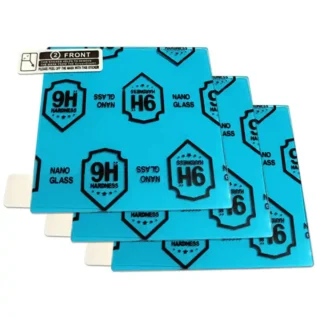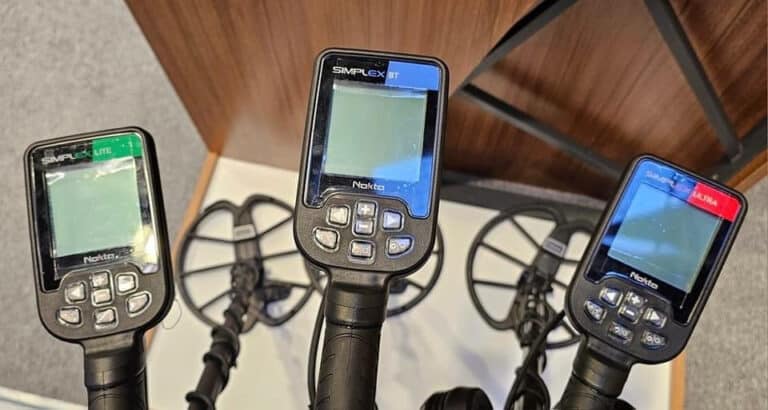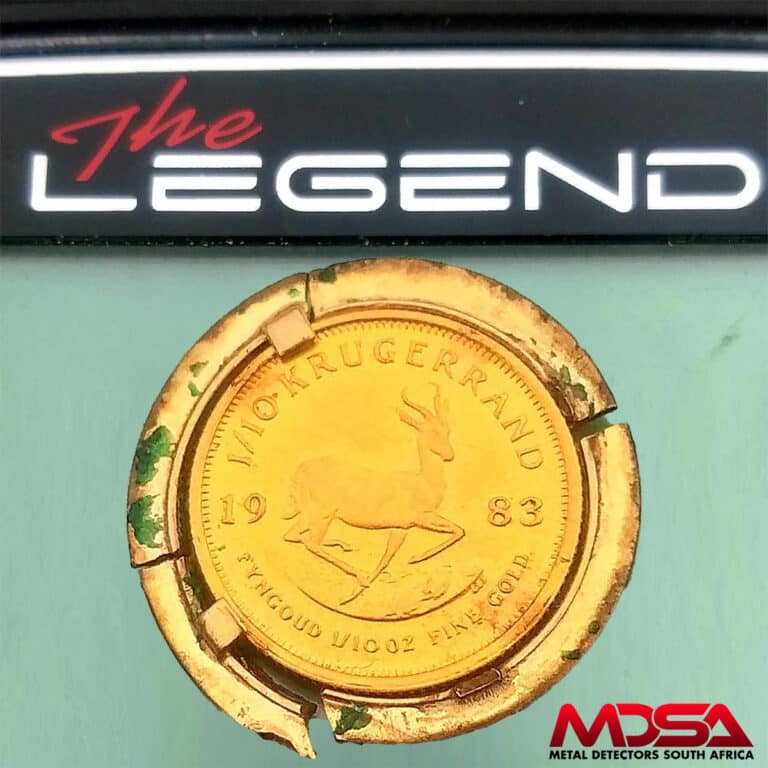The question: “How deep can a metal detector find targets?” comes up so often. This is not a straightforward question and there is no easy answer. Many factors play a role and influence how deep you can find metal objects with your metal detector. We will cover each of these factors in depth below.
Many factors play a role and influence how deep a metal detector can find targets
Soil Type / soil composition
The type of soil you are detecting in plays a very important factor. Soil varies in terms of mineralisation, moisture, and density.
The more mineralised the soil the less deep you will be able to detect. Mineralised soil has a significant impact on the depth you can search.
The moister the soil the deeper you can typically detect. This is because water is a good conductor and enables the signal to penetrate deeper. It is also for this reason that when detecting shortly after rain you usually find your best finds. Note, if it is too wet this can have the opposite effect with more false signals, thus negatively impacting how deep you can detect. If this is the case you need to turn down the sensitivity of the metal detector which in turn limits depth.
Size of target
If the target is very small it can’t be detected as deep as for instance a larger target. So the larger the target the deeper you can typically detect it.
Angle of target / orientation
The way in which the target lies below the surface or the angle at which it lies below the surface will also impact how easily or deeply it can be detected.
You can have a large target, but it if is lying on its side with the thin side facing upwards it will be harder to detect compared to if it were lying flat side facing upwards.
Surrounding targets
It is often the case that a good target is surrounded by lots of unwanted targets such as iron, foil and pull tabs etc. If any of these junk targets are lying above or very close to a good target it makes it hard to identify a target as being worthwhile to dig.
It is for this reason why we always recommend digging all targets. Remember to always recheck your hole, you never know if a good target is still hiding beneath.
Metal type of the target
Certain metals offer higher conductivity making it easier to detect and enable deeper detecting.
For example, gold, silver and copper are excellent conductors and are thus easier to detect where aluminium, zinc and lead are less though.
Note, although gold is an excellent conductor you may not find gold as easy to detect due to its scarcity and when you do happen to come across gold it is usually very small in size.
Type of metal detector being used
The quality of the metal detector you are using will influence how deep you can find targets. Some of the newer metal detectors have improved depth due to increased power and optimised search frequencies. A good example of this is the Garrett AT Max where Garrett market it as having significant depth increase compared to the older Garrett AT Pro and Garrett AT Gold which are still very capable metal detectors.
Size of the coil being used on the metal detector
Search coils come in a wide range of sizes, shapes and configurations. These differences in the configuration of the coil inside the search coil generate different shape search patterns. Also the larger the search coil, the deeper it can typically detect larger objects. Having a large search coil is not always practical as it makes it harder to detect in very trashy sites.
A small search coil is more sensitive to smaller objects, hence it is not always the case that the bigger the coil the better. Having a smaller search coil makes it easier to detect in trashy areas as you can better separate between the trash and signalling out good targets even if they are small.

 Nokta Legend Nano-Glass Screen Protector - 3 Pack
Nokta Legend Nano-Glass Screen Protector - 3 Pack 






